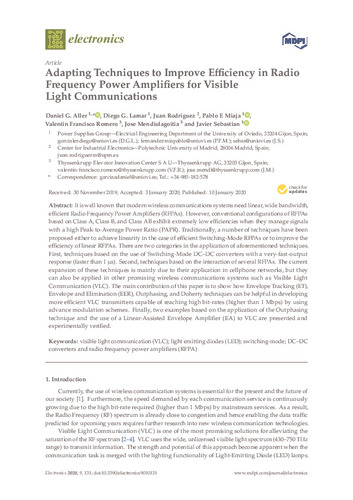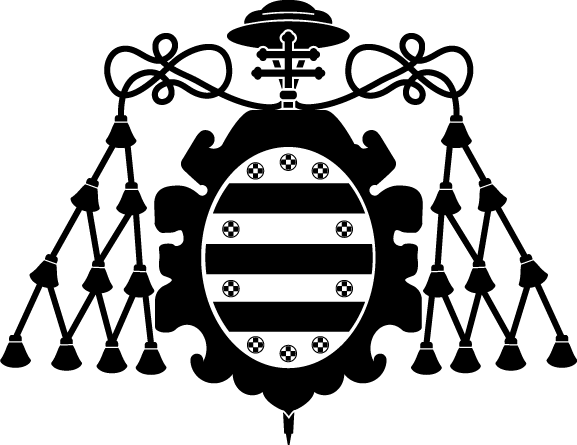Adapting Techniques to Improve Efficiency in Radio Frequency Power Amplifiers for Visible Light Communications
Subject:
Visible Light Communication (VLC)
Light emitting diodes (LED)
Switching-mode
DC–DC converters and radio frequency power amplifiers (RFPA)
Publication date:
Editorial:
MDPI
Publisher version:
Citación:
Abstract:
It is well known that modern wireless communications systems need linear, wide bandwidth, e cient Radio Frequency Power Amplifiers (RFPAs). However, conventional configurations of RFPAs based on Class A, Class B, and Class AB exhibit extremely low e ciencies when they manage signals with a high Peak-to-Average Power Ratio (PAPR). Traditionally, a number of techniques have been proposed either to achieve linearity in the case of e cient Switching-Mode RFPAs or to improve the e ciency of linear RFPAs. There are two categories in the application of aforementioned techniques. First, techniques based on the use of Switching-Mode DC–DC converters with a very-fast-output response (faster than 1 s). Second, techniques based on the interaction of several RFPAs. The current expansion of these techniques is mainly due to their application in cellphone networks, but they can also be applied in other promising wireless communications systems such as Visible Light Communication (VLC). The main contribution of this paper is to show how Envelope Tracking (ET), Envelope and Elimination (EER), Outphasing, and Doherty techniques can be helpful in developing more e cient VLC transmitters capable of reaching high bit-rates (higher than 1 Mbps) by using advance modulation schemes. Finally, two examples based on the application of the Outphasing technique and the use of a Linear-Assisted Envelope Amplifier (EA) to VLC are presented and experimentally verified
It is well known that modern wireless communications systems need linear, wide bandwidth, e cient Radio Frequency Power Amplifiers (RFPAs). However, conventional configurations of RFPAs based on Class A, Class B, and Class AB exhibit extremely low e ciencies when they manage signals with a high Peak-to-Average Power Ratio (PAPR). Traditionally, a number of techniques have been proposed either to achieve linearity in the case of e cient Switching-Mode RFPAs or to improve the e ciency of linear RFPAs. There are two categories in the application of aforementioned techniques. First, techniques based on the use of Switching-Mode DC–DC converters with a very-fast-output response (faster than 1 s). Second, techniques based on the interaction of several RFPAs. The current expansion of these techniques is mainly due to their application in cellphone networks, but they can also be applied in other promising wireless communications systems such as Visible Light Communication (VLC). The main contribution of this paper is to show how Envelope Tracking (ET), Envelope and Elimination (EER), Outphasing, and Doherty techniques can be helpful in developing more e cient VLC transmitters capable of reaching high bit-rates (higher than 1 Mbps) by using advance modulation schemes. Finally, two examples based on the application of the Outphasing technique and the use of a Linear-Assisted Envelope Amplifier (EA) to VLC are presented and experimentally verified
ISSN:
Patrocinado por:
This work was funded by the Spanish Government under Project MINECO-17-DPI2016-75760-R, by the Principado de Asturias under Projects SV-PA-17-RIS3-4 and FC-GRUPIN-IDI/2018/000179, and the scholarship BP17-91, as well as by European Regional Development Fund (ERDF) grants
Collections
Files in this item





